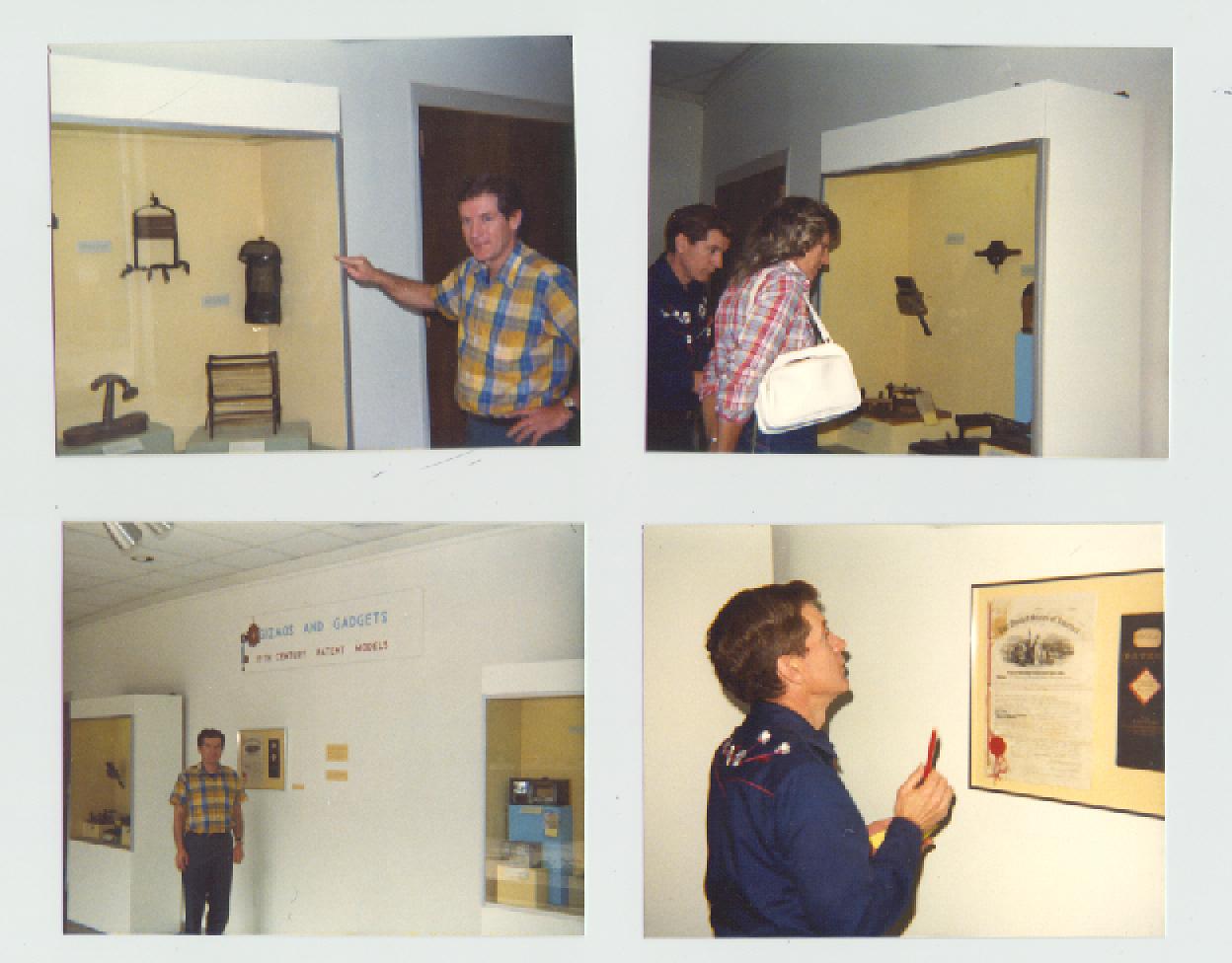Thanks to the folks at www.officemachines.com/mail_machines.htm for some of the research info about Robert Dick.
The earliest known patent for an addressing machine was awarded to Canadian, Robert Dick, in 1859.He had 3 improvement patents, in 1875, 1884, and 1889. The model shown here is his last one, done in 1889. According to the 1859 Dick patent, a user of his addressing machine was expected to use a printing press to print columns of names and addresses on sheets of paper. The individual columns of names and addresses were then cut apart and glued together end to end to form a roll. The roll was put on a spool in the back end of the addressing machine. The paper was fed through a number of rollers, which moved the paper through a tank containing liquid adhesive, and then to a cutter at the front of the machine. The machine was placed on a stack of envelops, newspapers, or other items to be addressed. When the first name and address came out of the machine, it was cut off the roll and at the same time pressed onto the top envelope. That envelope was removed, and the process continued. The patent claimed that two people with one machine could address 4,000 items per hour. Dick proposed that the same technology could be used to produce account statements that could be attached to cards and mailed.
Museum photos are from the early 1980s when a portion of the collection was displayed in the Morris Museum of Arts and Sciences as seen in the photo below.
